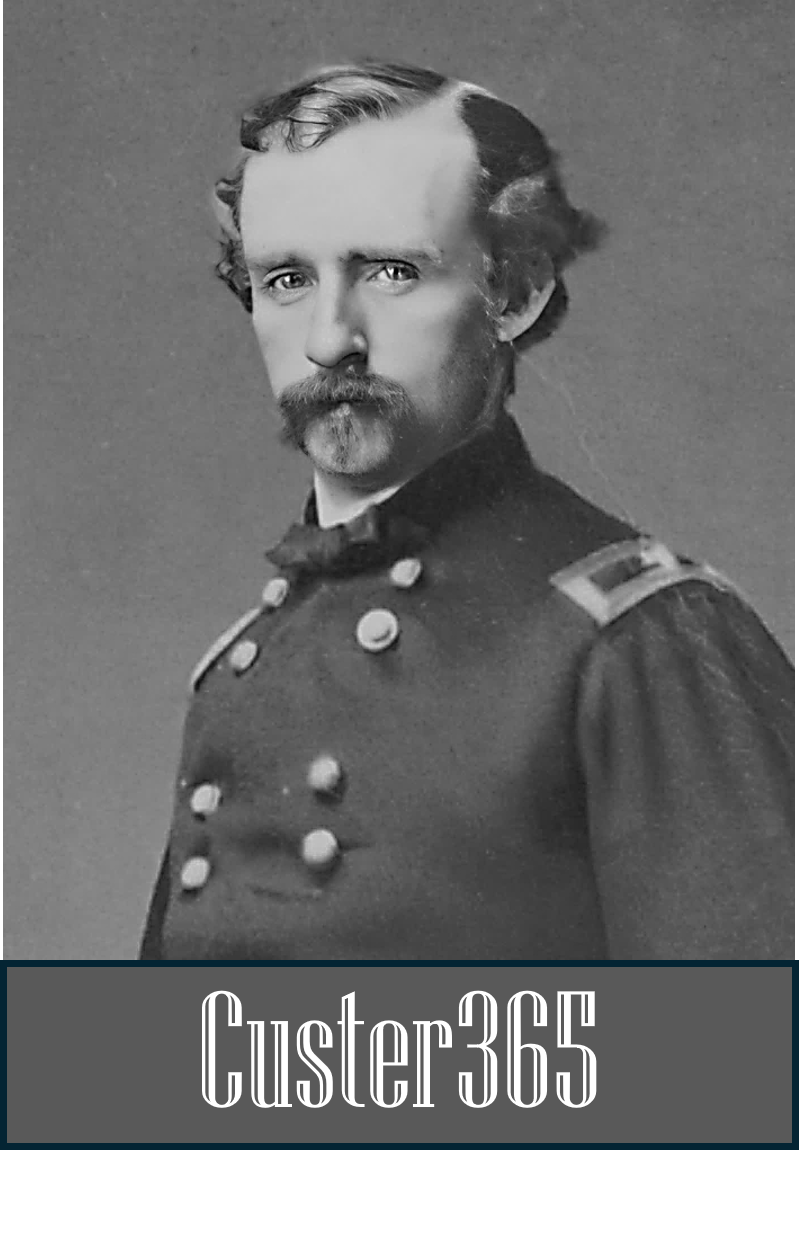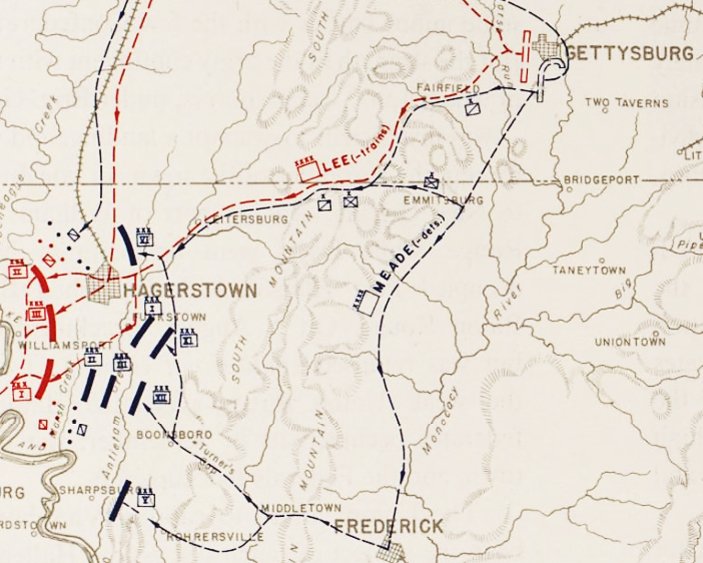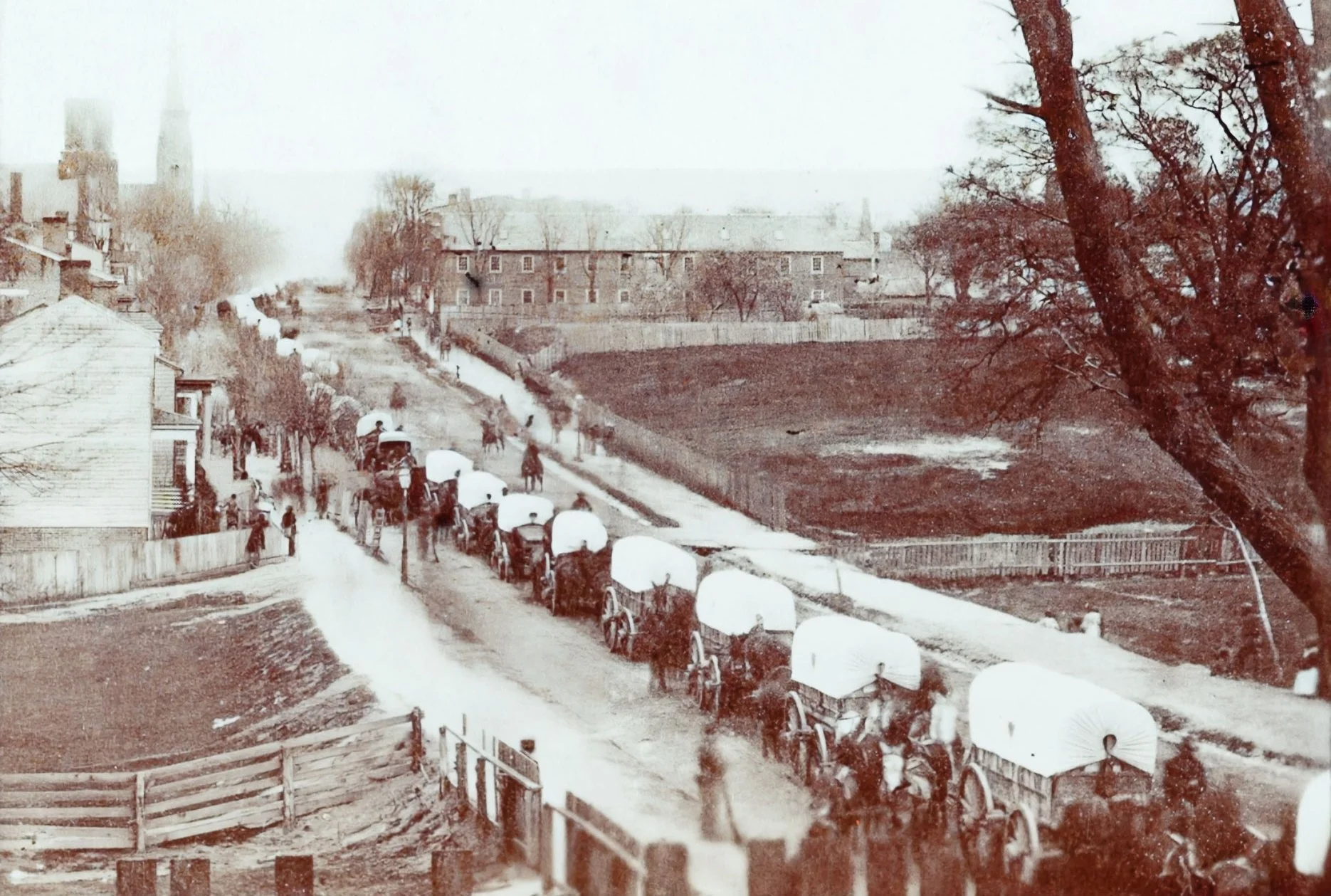JULY 4: Lee Flees
The defeated Confederate Army of Northern Virginia, led by Gen. Robert E. Lee, begins its withdrawal from Gettysburg on July 4, 1863. George Custer’s Michigan Brigade, along with other Union forces, is ordered to pursue Lee’s retreating army and harass it, along with locating and destroying a large wagon train.
Late that evening, Union cavalry under Gen. Judson Kilpatric, which included Custer’s 5th Michigan Cavalry, approached Monterey Pass, a gap in South Mountain in Franklin County, Pennsylvania. The 5th Michigan Cavalry, led by Col. Russell A. Alger, reached the base of the gap at about sundown. They charged up the eastern slope and across Red Run Creek Bridge. A torrential rainstorm limited visibility to “a half dozen paces ahead.” The opposing troops collided in hand-to-hand combat in the narrow pass. Other Union troops advanced up the mountain, threatening to outflank the Confederates, who withdrew further up the summit.
A charge by the First West Virginia Cavalry gained the mountain summit and resulted in capture of a Confederate artillery piece. According to one account: “In wild confusion, a number of wagon teams bolted down the westerns slope of the pass and crashed into ravines or ran off of cliffs.”
Union forces triumphed and by 3 a.m. on July 5 had captured dozens of wagons from the miles-long wagon train of the Confederate Second Corps. Most of the wagons were subsequently burned and 1,500 Confederate prisoners were captured. The Battle of Monterey Pass, which spilled over the Mason-Dixon Line, involved approximately 10,000 soldiers, making it the second-largest battle fought on Pennsylvania soil, following only the Battle of Gettysburg.
The route Confederates took (in red) exiting Gettysburg on July 4, 1863. (Credit: Library of Congress)
Civil War wagon train. (Credit: Library of Congress)
Robert E. Lee, Confederate General and Commander of the Army of Northern Virginia. (Credit: Library of Congress)




